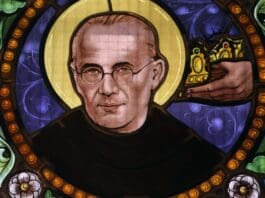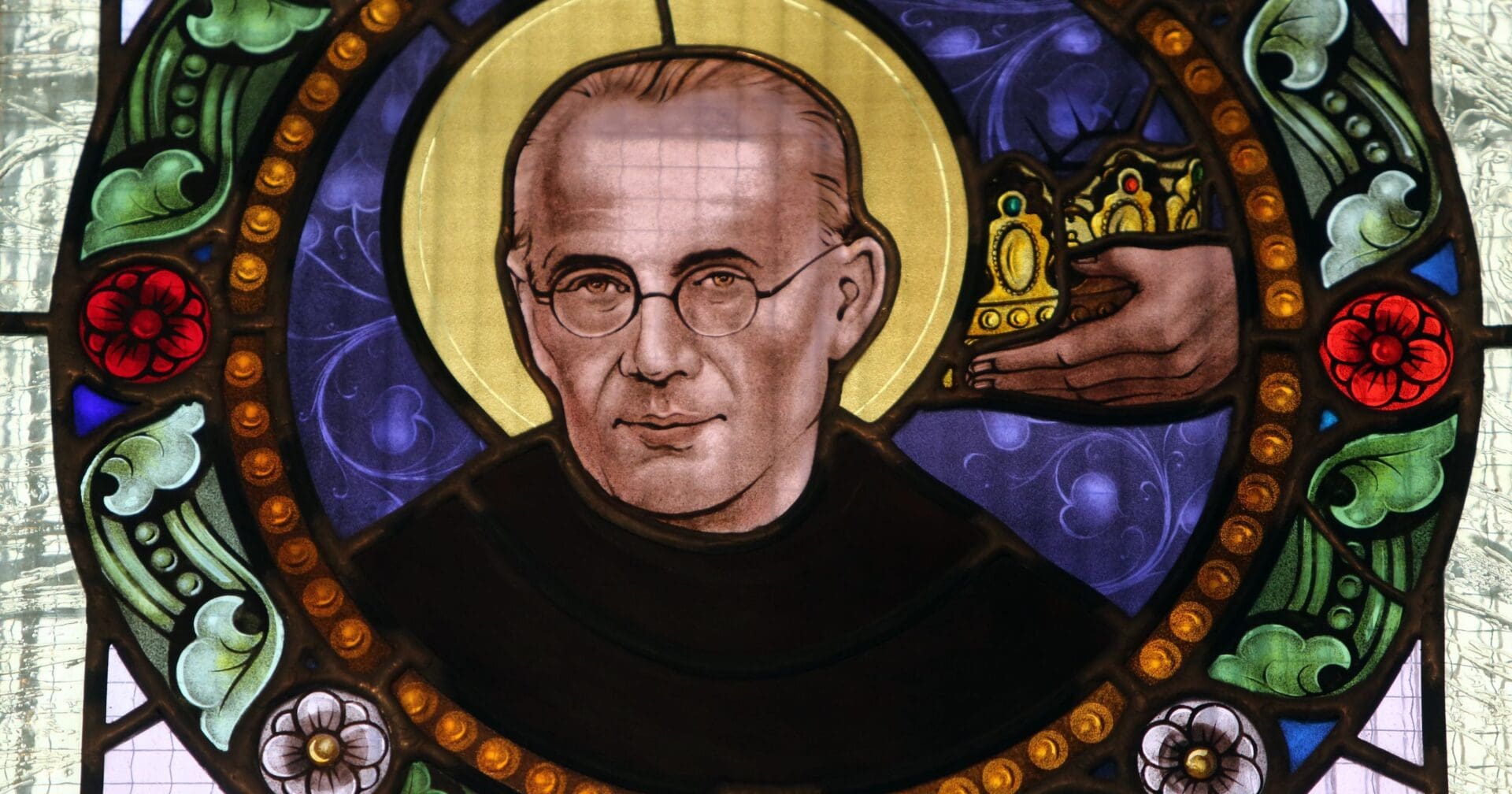
Born Rajmund Kolbe on January 8, 1894, in Zduńska Wola within the Russian Empire, Saint Maximilian Kolbe is renowned as the “Apostle of Consecration to Mary.”
Young Kolbe grew up in a devout family. They moved to Pabianice, working as weavers and later running a bookstore. Kolbe’s father, in 1914, even joined the fight for Poland’s independence, only to be captured by the Russians.
In 1907, drawn towards religious life, Kolbe and his elder brother crossed into Austria-Hungary to join the Conventual Franciscan junior seminary in Lwów. By 1911, he’d taken his first vows and adopted the name Maximilian. He completed his final vows in Rome in 1914, adding “Maria” to honor the Virgin Mary.
Rome was an educational haven for Kolbe. He pursued diverse subjects like philosophy, theology, mathematics, and even astrophysics. By 1919, he had two doctorates from prestigious institutions. The vehement anti-papal demonstrations by the Freemasons in Rome propelled Kolbe to form the Militia Immaculata (Army of Mary). This group aimed at converting sinners and the Church’s adversaries through Mary’s intercession.
Back in Poland, Kolbe was a whirlwind of activity. He passionately promoted the veneration of the Virgin Mary, establishing the Niepokalanów monastery near Warsaw, a radio station, seminary, and more. The 1930s saw him in Japan, where he founded a Nagasaki monastery, a newspaper, and a seminary. Interestingly, his decision to build the monastery on a particular mountain side protected it from the devastating atomic bomb blast in Nagasaki during WWII.
The war brought chaos to Poland. Kolbe’s friary became a haven, sheltering many, including 2,000 Jews from Nazi persecution. As a radio amateur (SP3RN), he openly condemned Nazi actions.
However, in February 1941, the Nazis arrested Kolbe. He was transferred to Auschwitz in May. A few months later, when a prisoner’s escape led to ten men being chosen for starvation as punishment, Kolbe’s unyielding spirit of service shone brightly. He voluntarily replaced a distraught man, Franciszek Gajowniczek, who feared for his family.
For three weeks, Kolbe uplifted fellow prisoners in Block 11 with songs and prayers. He was the last survivor, eventually executed via a lethal injection.
Saint Maximilian Kolbe’s is celebrated as one of the ten 20th-century martyrs above Westminster Abbey’s Great West Door. His ultimate sacrifice was recognized by the Vatican, and he was canonized by Pope John Paul II in 1982, with Gajowniczek in attendance.
Editorial credit: Zvonimir Atletic / Shutterstock.com
The post Saint Maximilian Kolbe appeared first on uCatholic.
Daily Reading
Tuesday of the Thirty-fourth Week in Ordinary Time
Reading 1 RV 14:14-19 I, John, looked and there was a white cloud, and sitting on the cloud one who looked like a son of man, with a gold crown…
Daily Meditation
Do Not Be Led Astray, Do Not Fear
Click here for daily readings In this somewhat confusing Gospel passage Jesus says two things in particular that stand out to me. “Take heed that you are not led astray”…




